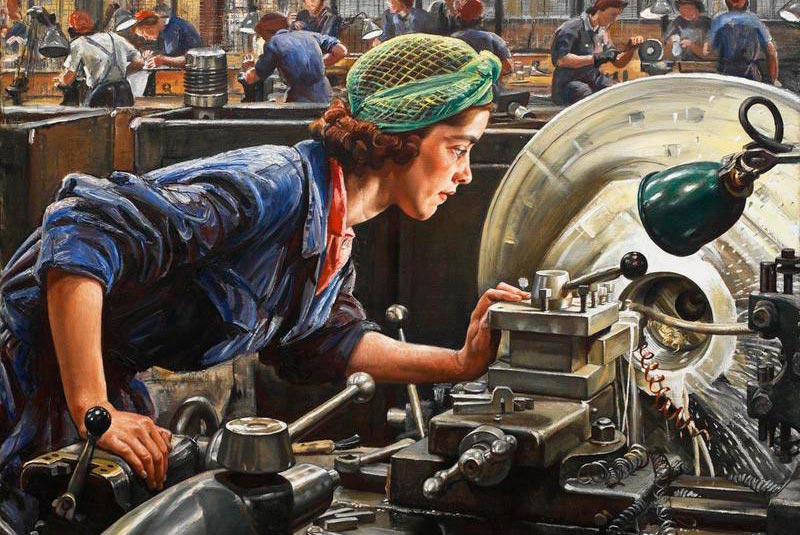Three minutes. That’s all it took to realise that Laura Knight (currently showing at the National Portrait Gallery) is an ‘important’ painter. She was made a Dame in 1929. And she was the first woman to be received, in 1936, as a full member of the Royal Academy since 1768; an extraordinary fact in every sense of the phrase.
She was popular, too. The exhibition is dotted with colour supplements from the 1920s and 1930s devoted to or illustrated by Knight. These tatty old mags hint at Knight’s talent for self-publicity. She was the author of two volumes of autobiography and she was a frequent presence in the press. It was common knowledge that she lunched with the Prince of Wales and then took the omnibus home. And, my, was she successful. ‘I could sell nearly everything I touched…’
It took me very much longer than three minutes to decide that Dame Laura Knight is not a great painter. She was certainly accomplished. The heavy brushwork and startling, overbearing colours in Rose and Gold (a portrait of the model Dolly Henry, 1914) are proof of her technical gifts. And she was often daring. The show opens with her sensational self-portrait of 1913, in which she depicted herself in dowdy work clothes painting a female nude. Knight’s glance back across her right shoulder is a rebuke, as if the viewer were a peeping tom. It is, if you’ll excuse the double-entendre, full of cheek. It seems to say: ‘Anything you men can do, I can do. Grow up.’
That’s Knight at her most provocative. She is at her most captivating with the wartime classic Ruby Loftus Screwing a Breech-Ring (1943) and her earlier series of portraits of black mothers-to-be at the segregated John Hopkins’ Hospital in Baltimore. Ruby exudes brilliance through application; a woman excelling at a job that a man would take eight years to master. Ruby is the industrial counterpart to the artistic statement made by the 1913 self-portrait. As for the pregnant women, the simplicity of composition and the purity of execution make them shine with an inner beauty and strength. Motherhood cannot be segregated.
Lord Clark of Civilization derided Knight’s work as ‘commonplace’. For me, she is at her best painting common people because exotic subjects sometimes expose her limitations. Knight is famous for depicting ballet dancers and actresses. I can’t think why because the pictures are so derivative of Degas et al, and Knight simply isn’t in their class.
There’s much to admire in her 1924 portrait of the actress Gwen Ffrangcon-Davies: Gwen’s arms, hair and face are lively. But Knight’s attempt at the yellow dress is sub-standard – a vast curried blancmange wobbling its way down Gwen’s chest and shoulders. Her torso and legs are not covered; they are absent. And the outline of the span of her hips is twice the width of her shoulders, which can’t be right. It’s as if the dress were stuck on, rather than painted around the form of a desirable actress. If you think this a harsh assessment, then I suggest that you visit the National Gallery to look at some Veroneses. The Italian master’s fabrics shimmer and they suggest the contours of the body that wears them.
It is impossible to see this show and not admire Knight; but, it is equally impossible to escape the feeling that much of her work would have been ‘commonplace’ in 1900s Paris. Yet Dame Laura Knight is a very important figure in modern British art. Therein is our historical problem.
‘Laura Knight Portraits’ is at the National Portrait Gallery, London, until 13 October 2013, after which it transfers to the Laing Art Gallery, Newcastle (2 November 2013–16 February 2014), and then to Plymouth Art Gallery (1 March–10 May 2014).



